
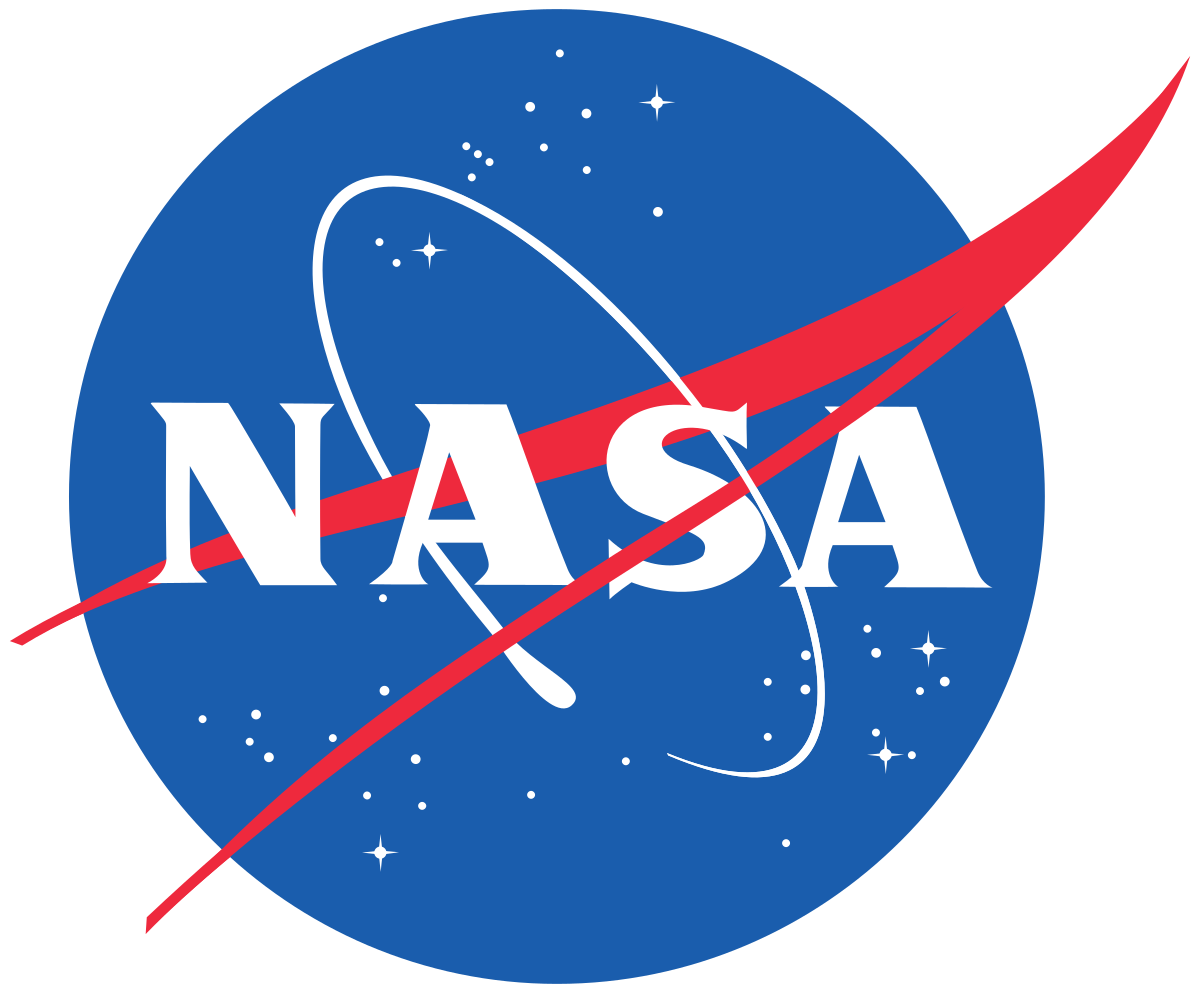 20 February 1962: At 9:47:39 a.m., Eastern Standard Time, NASA’s Mercury-Atlas 6 lifted off from Launch Complex 14, Cape Canaveral Air Force Station, Cape Canaveral, Florida. This was the third launch of a manned Mercury spacecraft, and the first time that an Atlas rocket had been used.
20 February 1962: At 9:47:39 a.m., Eastern Standard Time, NASA’s Mercury-Atlas 6 lifted off from Launch Complex 14, Cape Canaveral Air Force Station, Cape Canaveral, Florida. This was the third launch of a manned Mercury spacecraft, and the first time that an Atlas rocket had been used.
Aboard the spacecraft was Lieutenant Colonel John Herschel Glenn, Jr., United States Marine Corps, an experienced fighter pilot and test pilot.
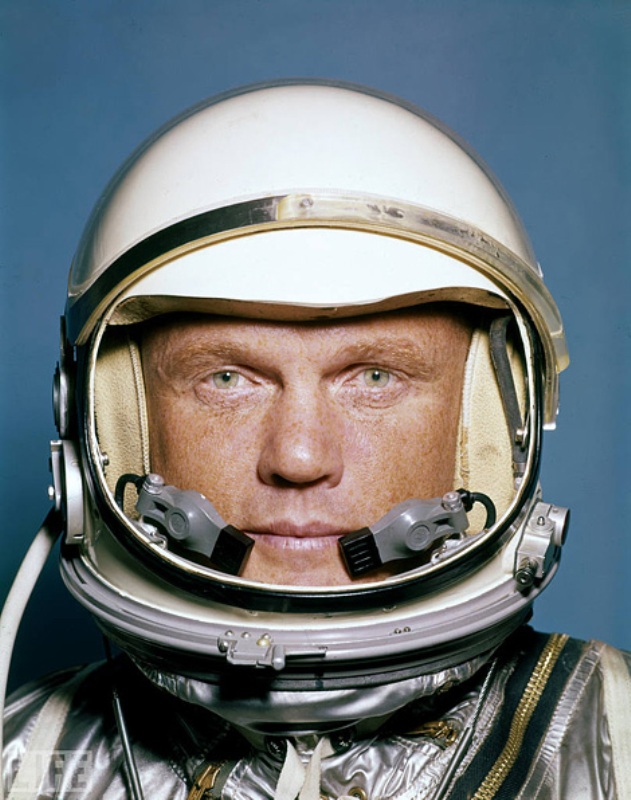
In his post-flight mission report, Glenn wrote,
When the countdown reached zero, I could feel the engines start. The spacecraft shook, not violently but very solidly. There was no doubt when lift off occurred, When the Atlas was released there was an immediate gentle surge to let you know you were on your way.
—Results of the First United States Orbital Space Flight (NASA-TM-108606), Manned Spacecraft Center, National Aeronautics and Space Administration, at Page 120, Column 1
2 minutes, 9.6 seconds after liftoff, the booster engines cut of and were jettisoned. 23 seconds later, the escape tower, no longer needed, was also jettisoned. The Atlas sustainer engine continued to burn until T+00:05:01.4. The spacecraft had now reached 17,544 miles per hour (28,234 kilometers per hour) and was in an elliptical orbit around the Earth. At T+00:05:03.6 the Mercury spacecraft separated from the Atlas booster. During the climb to orbit, John Glenn experienced a maximum acceleration of 7.7 gs.
Glenn’s orbit had an apogee of 162.2 statute miles (261 kilometers) and perigee of 100 miles (161 kilometers). The orbit was inclined 32.54° relative to Earth’s orbital plane. Friendship 7 completed an orbit every 88 minutes, 29 seconds.
Analysis showed that the Atlas had placed Friendship 7 in orbit at a velocity with 7 feet per second (2.1 meters per second) less than nominal. However, computer analysis showed that the orbital trajectory was good enough for nearly 100 orbits.
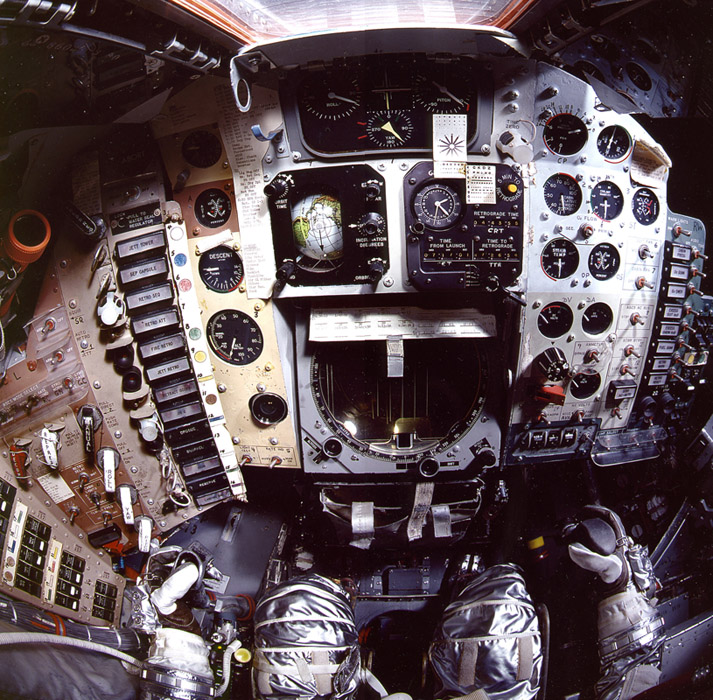
During the 4 hour, 55 minute, 23 second flight, the Mercury capsule orbited the Earth three times. John Glenn was the first American astronaut to orbit the Earth. (Cosmonaut Yuri Gagarin had orbited the Earth 12 April 1961.)
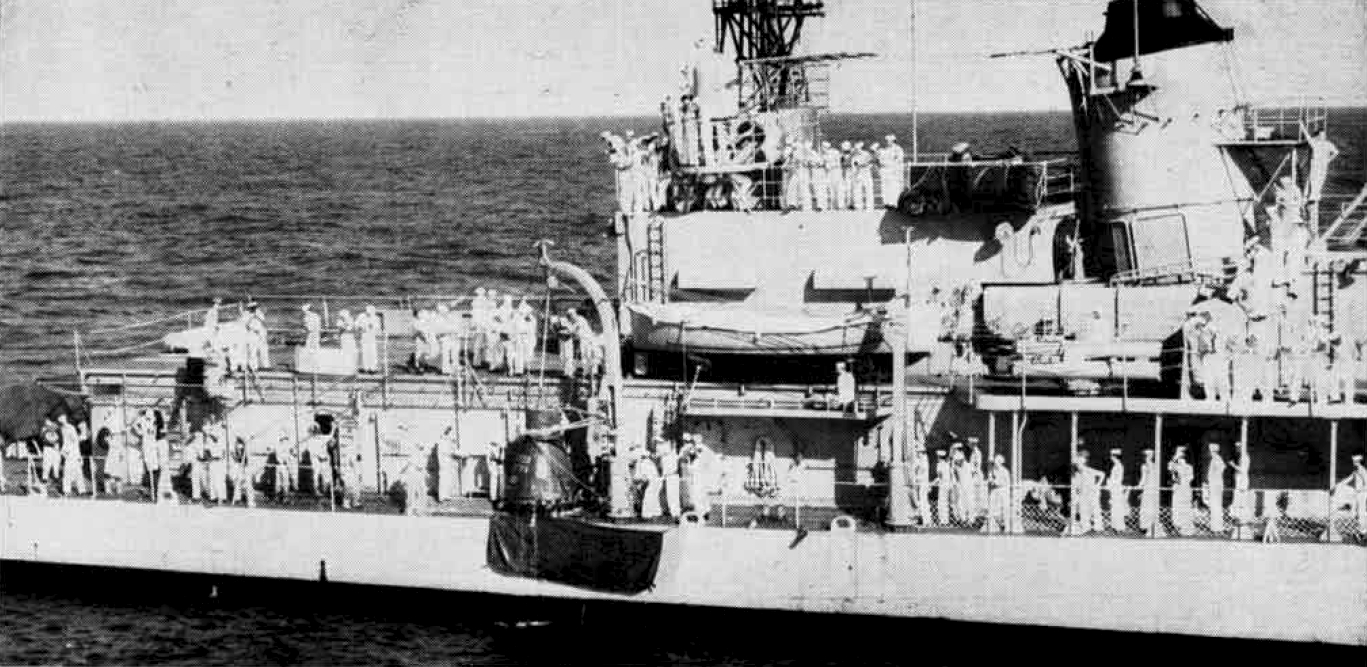
After re-entry, the capsule parachuted into the Atlantic Ocean, only six miles from the recovery ship, USS Noa (DD-841).
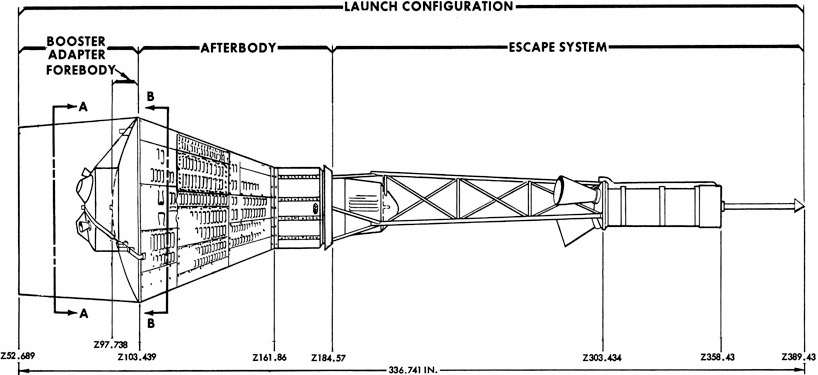
![]() The Mercury spacecraft, Friendship 7, was built by McDonnell Aircraft Corporation, St. Louis, Missouri. It was the 13th Mercury capsule built. Designed to carry one pilot, it could be controlled in pitch, roll and yaw by steam thrusters fueled by hydrogen peroxide. The Mercury was 7 feet, 2.83 inches (2.206 meters) long, not including its retro rocket pack. The spacecraft was generally conical, and had a maximum diameter of 6 feet, 2.50 inches (1.885 meters). It weighed 2,700 pounds (1,224.7 kilograms) at launch.
The Mercury spacecraft, Friendship 7, was built by McDonnell Aircraft Corporation, St. Louis, Missouri. It was the 13th Mercury capsule built. Designed to carry one pilot, it could be controlled in pitch, roll and yaw by steam thrusters fueled by hydrogen peroxide. The Mercury was 7 feet, 2.83 inches (2.206 meters) long, not including its retro rocket pack. The spacecraft was generally conical, and had a maximum diameter of 6 feet, 2.50 inches (1.885 meters). It weighed 2,700 pounds (1,224.7 kilograms) at launch.
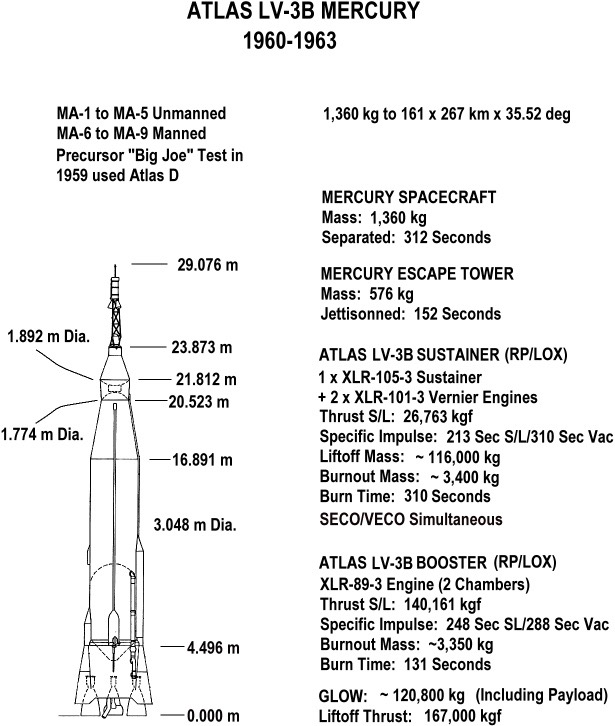
 The rocket, a “1-½ stage” liquid-fueled Atlas LV-3B, number 109-D, was built by the Convair Division of General Dynamics at San Diego, California. It was developed from a U.S. Air Force SM-65 Atlas D intercontinental ballistic missile, modified for use as a “man-rated” orbital launch vehicle.
The rocket, a “1-½ stage” liquid-fueled Atlas LV-3B, number 109-D, was built by the Convair Division of General Dynamics at San Diego, California. It was developed from a U.S. Air Force SM-65 Atlas D intercontinental ballistic missile, modified for use as a “man-rated” orbital launch vehicle.
The LV-3B was 65 feet (19.812 meters) long from the base to the Mercury adapter section, and the tank section is 10 feet (3.038 meters) in diameter. The complete Mercury-Atlas orbital launch vehicle is 93 feet (28.436 meters) tall, including the escape tower. When ready for launch it weighed approximately 260,000 pounds (118,000 kilograms) and could place a 3,000 pound (1,360 kilogram) payload into low Earth orbit.
![]() The Atlas’ three engines were built by the Rocketdyne Division of North American Aviation, Inc., at Canoga Park, California. Two Rocketdyne LR89-NA-5 engines and one LR105-NA-5 produced 341,140 pounds (1,517.466 kilonewtons) of thrust. The rocket was fueled by a highly-refined kerosene, RP-1, with liquid oxygen as the oxidizer.
The Atlas’ three engines were built by the Rocketdyne Division of North American Aviation, Inc., at Canoga Park, California. Two Rocketdyne LR89-NA-5 engines and one LR105-NA-5 produced 341,140 pounds (1,517.466 kilonewtons) of thrust. The rocket was fueled by a highly-refined kerosene, RP-1, with liquid oxygen as the oxidizer.
Friendship 7 is displayed at the Smithsonian National Air and Space Museum.
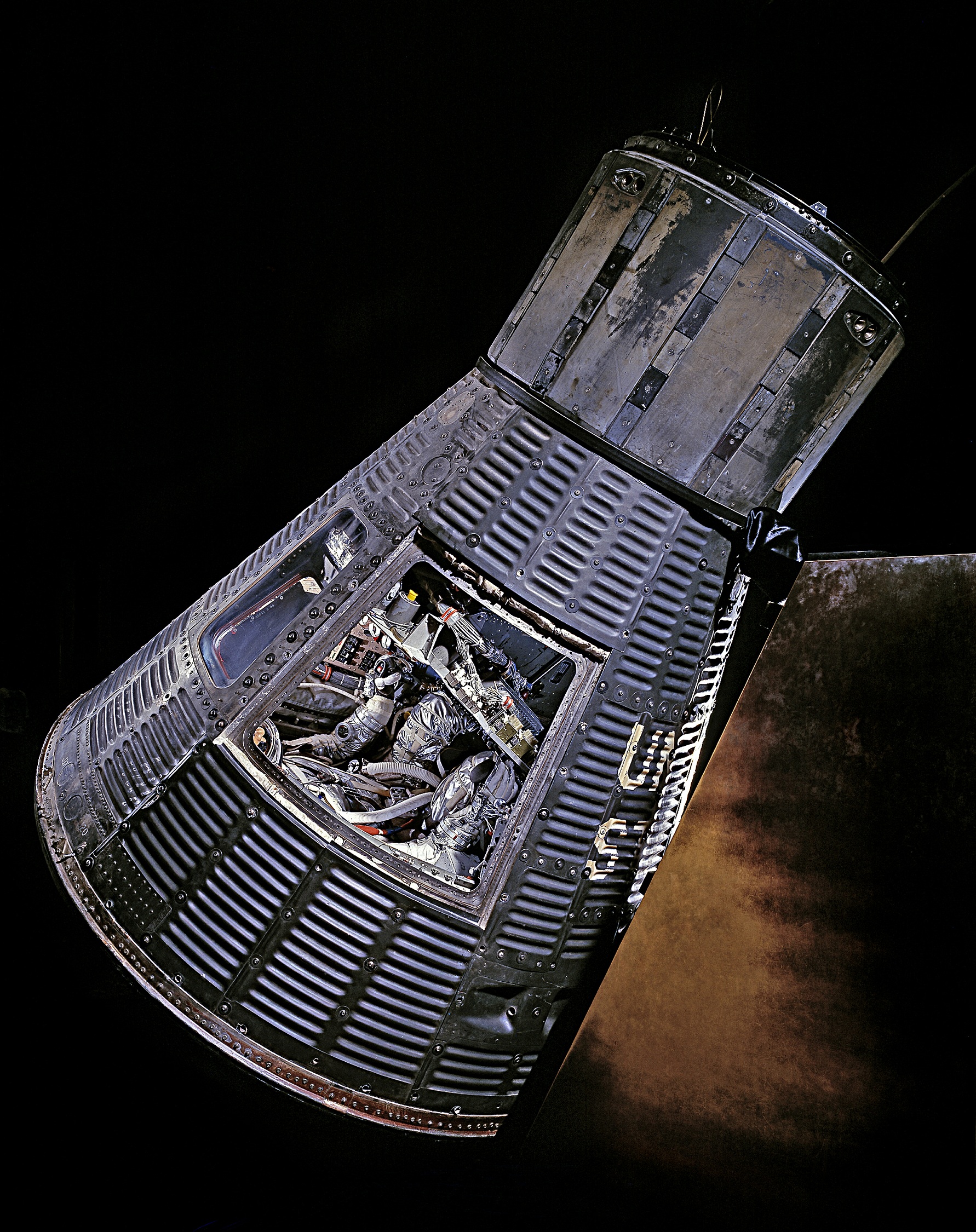
© 2019, Bryan R. Swopes
My Father, Leo J. Hanley, a member of the Australian Government Weapons Research Establishment was posted to Muchea Tracking Station just to the north of Perth, Western Australia during the Project Mercury phase.
Muchea was a “Command Station” and there were always NASA Astronauts posted to the site when space flights were undertaken.
As a young teenager, I got to meet a few of those men during their tour of duty out here.
I have some artifacts such as the retrorocket firing swith cover in my possession to this day
Regards
John B Hanley
Perth, Western Australia
As a kid growing up in Central Florida, I watched this and many other launches. Everybody was out of the school and on the street; these were televised live and not considered routine like today.